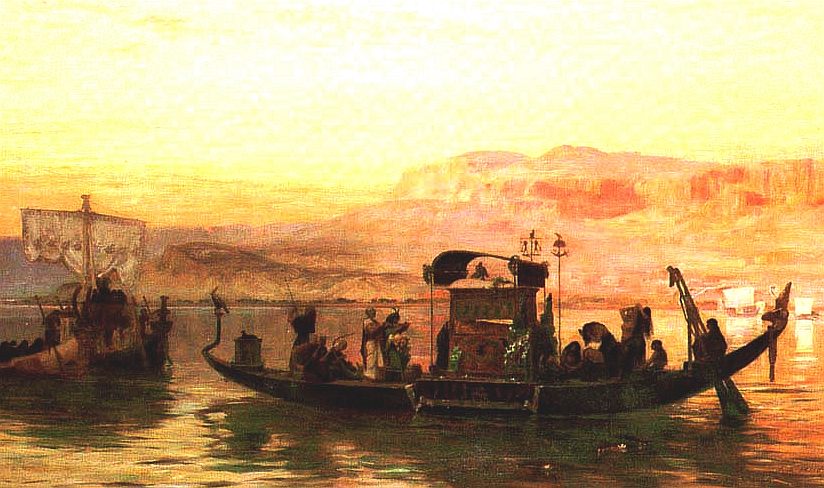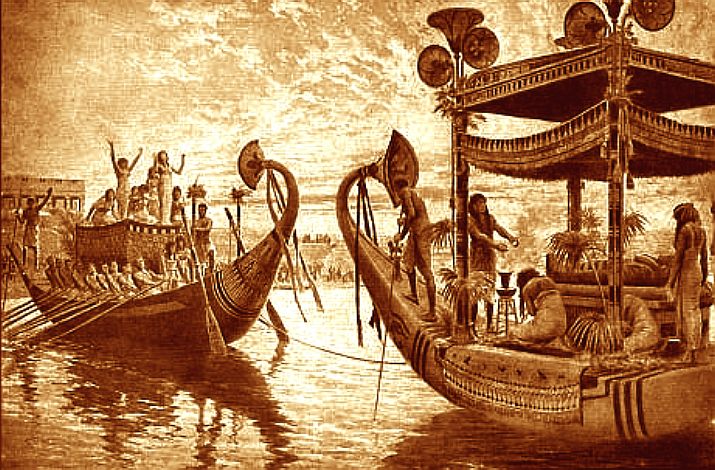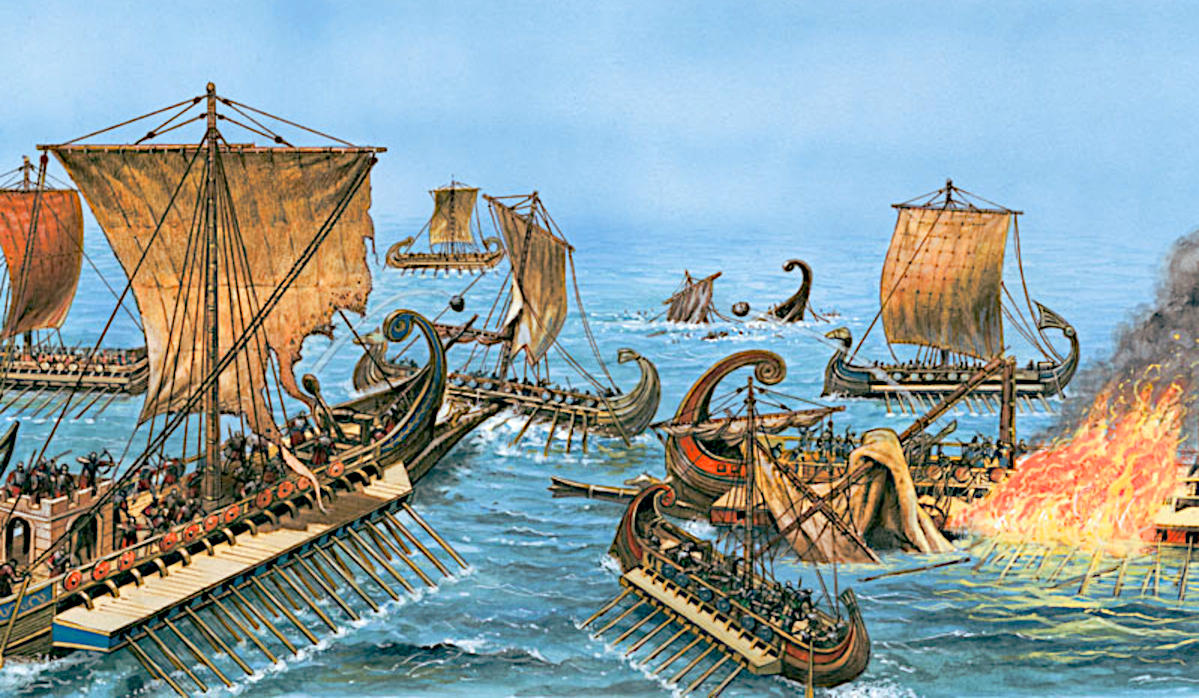
BASEL
UNIVERSITY 3RD CENTURY CE EGYPT - The third century CE was a period of grand-scale transformations and existential threats to the Roman Empire, the ancient superpower that ruled a geographically vast and ethnically diverse area comprising nearly a fourth of the world population at that time. During the third century, the Roman Empire experienced military anarchy, civil wars, rampant inflation, severe famines, dramatic changes in the religious landscape, bloody persecutions of minority groups, and raids and invasions from beyond the frontier. What were the reasons and causal relationships underlying this concurrence of adverse events?
Recent research has suggested that climate variations triggered these cascading shocks, but this theory has yet to be put to scrutiny through a comprehensive interdisciplinary analysis of all available evidence. Due to its unparalleled evidence, the Roman province of Egypt can serve as a laboratory to test such hypotheses and study social vulnerability, resilience, and adaptation strategies in the face of environmental and climatic changes.
We are living in an anthropocence
age where the number of humans and the tendency to multiply and
develop in an uncoordinated fashion, have caused changes in our
climate and ocean temperatures, never seen before in the history
of planet earth.
The
net effects are staggering:
• Acid
oceans
• Desertification
• Extinctions
• Global
Warming Just
to name a few. 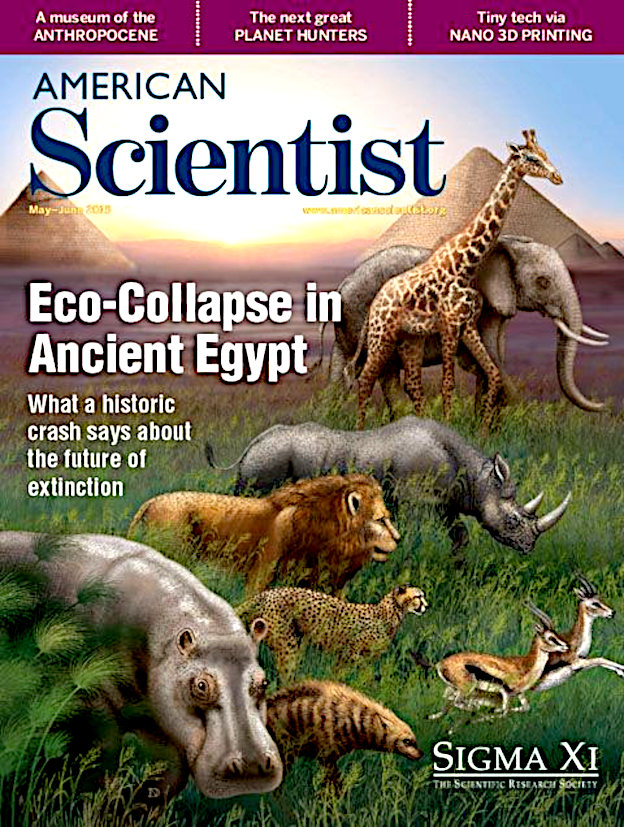
SCIENCE 30 AUGUST 2019
When we think of how humans have altered the planet, greenhouse gas warming, industrial pollution, and nuclear fallout usually spring to mind. But now, a new study invites us to think much further back in time. Humans have been altering landscapes planetwide for thousands of years: since at least 1000 B.C.E., by which time people in regions across the globe had abandoned foraging in favor of continually producing crops.
"This is the first project of its kind within archaeology," says Lucas Stephens, an archaeologist and environmental researcher at the Environmental Law & Policy Center in Chicago, Illinois, and the lead author of a study that presents the expert opinions of hundreds of archaeologists around the world. "There's never been a global synthesis like this."
Scientists have long sought to model ancient land use to accurately inform modern climate reconstructions and to set a start date for when humans first made their mark on the planet. The most commonly used model, however, uses estimates of estimates: It takes other scientists' guesses of the human populations of various regions, then estimates how much land would be required to sustain them. That model places the start date for continuous global farming at only 500 years ago.
To pinpoint a more accurate date, researchers divided Earth's land into 146 regions covering every continent except Antarctica. They then invited more than 1300 archaeologists with expertise in ancient land use to complete a roughly 80-question survey, asking how humans in each region used land for the past 10,000 years. Questions included when ancient people transitioned from foraging to farming and whether they developed pasturelands for grazing animals. The survey also asked how confident the archaeologists were in their answers.
The 711 responses from 255 archaeologists (researchers could take the survey multiple times if they were experts in multiple regions), were weighted according to confidence and then aggregated. The results of this ArchaeoGLOBE project—which counted 112 of the respondents as co-authors—reveals that hunter-gatherer lifestyles declined globally between 10,000 and 3000 years ago as they were replaced by continuous farming, the researchers report this week in Science. By about 1000 B.C.E., all of the world's regions that now practice farming were annually cultivating crops.
Those trends also imply that ancient humans may have been influencing climate by raising livestock and razing forests to create croplands. Researchers debate the size of the climatic impact, but by 3000 years ago the effects were significant, "albeit smaller than those of today," says co-author Erle Ellis, ArchaeoGLOBE's project leader and an environmental scientist at the University of Maryland, Baltimore County.
The timing suggests the Anthropocene, a newly proposed epoch that marks when humans first started to leave their geological mark on Earth, needs an earlier start date, writes Neil Roberts, who studies environmental change and archaeology at the universities of Plymouth and Oxford in the United Kingdom, in an accompanying editorial.
The Anthropocene Working Group (AWG), a group of mostly earth scientists tasked with defining the epoch's start, have generally agreed on the mid-1950s, when radioactive particles from hydrogen bombs embedded themselves in sediments across the globe, where they will linger for tens of thousands of years.
AWG chair Jan Zalasiewicz, a geologist at the University of Leicester in the United Kingdom, calls the new study "useful" but says it "doesn't show anything dramatically new." There's no doubt humans have altered landscapes throughout prehistory, he explains, but for the Anthropocene to be recognized as a formal geological epoch, it needs to show a distinct signature in the rock record, which the study doesn't provide.
The authors do, however, show a unique approach to crowdsourcing data collection, says Ruth Duerr, a data management researcher at the Ronin Institute for Independent Study in Westminster, Colorado, and former head of the Earth and
Space Science Informatics section of the American Geophysical Union. She says the robust survey methods, the mass authorship, and the crowdsourced open data make the study a "model" model. "There are lots of crowdsourced citizen science projects out there," she says, "but here they're
crowd-sourcing from experts. The methodology is just so cool." 
The
Mediterranean Sea allowed for trade and cultural exchange between Egypt and other peoples of the region. The
Mediterranean Sea reached many areas of the ancient world known as the "Cradle of Civilization."
This is where it all began to go wrong with the Egyptians love
of plaster for their Pyramids, required the cutting down of
trees as the fuel to make such decorations. Can John
Storm and Cleopatra,
as Isis
reborn, begin to put things right? AEON
2018 - THE DEEP ANTHROPOCENE
A revolution in archaeology has exposed the extraordinary extent of human influence over our planet’s past and its future.
Humanity’s transition from hunting and gathering to agriculture is one of the most important developments in human and Earth history. Human societies, plant and animal populations, the makeup of the atmosphere, even the Earth’s surface – all were irreversibly transformed.
When asked about this transition, some people might be able to name the Neolithic Revolution or point to the Fertile Crescent on a map. This widespread understanding is the product of years of toil by archaeologists, who diligently unearthed the sickles, grinding stones and storage vessels that spoke to the birth of new technologies for growing crops and domesticating animals. The story they constructed went something like this: beginning in the Near East some 11,000 years ago, humans discovered how to control the reproduction of wheat and barley, which precipitated a rapid switch to farming. Within 500 to 1,000 years, a scattering of small farming villages sprang up, each with several hundred inhabitants eating bread, chickpeas and lentils, soon also herding sheep and goats in the hills, some keeping cattle.
This sedentary lifestyle spread, as farmers migrated from the Fertile Crescent through Turkey and, from there, over the Bosporus and across the Mediterranean into Europe. They moved east from Iran into South Asia and the Indian subcontinent, and south from the Levant into eastern Africa. As farmers and herders populated new areas, they cleared forests to make fields and brought their animals with them, forever changing local environments. Over time, agricultural advances allowed ever larger and denser settlements to flourish, eventually giving rise to cities and civilisations, such as those in Mesopotamia, Egypt, the Indus and later others throughout the Mediterranean and elsewhere.
For many decades, the study of early agriculture centred on only a few other regions apart from the Fertile Crescent. In China, millet, rice and pigs gave rise to the first Chinese cities and dynasties. In southern Mexico, it was maize, squash and beans that were first cultivated and supported later civilisations such as the Olmecs or the Puebloans of the American Southwest. In Peru, native potato, quinoa and llamas were among species domesticated by 5,000 years ago that made later civilisations in the Andes possible. In each of these regions, the transition to agriculture set off trends of rising human populations and growing settlements that required increasing amounts of wood, clay and other raw materials from the surrounding environments.
Yet for all its sweep and influence, this picture of the spread of agriculture is incomplete. New technologies have changed how archaeology is practised, from the way we examine ancient food scraps at a molecular level, to the use of satellite photography to trace patterns of irrigation across entire landscapes. Recent discoveries are expanding our awareness of just how early, extensive and transformative humans’ use of land has been. The rise of agriculture was not a ‘point in time’ revolution that occurred only in a few regions, but rather a pervasive, socioecological shifting back and forth across fuzzy thresholds in many locations.
Bringing together the collective knowledge of more than 250 archaeologists, the ArchaeoGLOBE project in which we participated is the first global, crowdsourced database of archaeological expertise on land use over the past 10,000 years. It tells a completely different story of Earth’s transformation than is commonly acknowledged in the natural sciences. ArchaeoGLOBE reveals that human societies modified most of Earth’s biosphere much earlier and more profoundly than we thought – an insight that has serious implications for how we understand humanity’s relationship to nature and the planet as a whole.
Just as recent archaeological research has challenged old definitions of agriculture and blurred the lines between farmers and hunter-gatherers, it’s also leading us to rethink what nature means and where it is. The deep roots of how humanity transformed the globe pose a challenge to the emerging Anthropocene paradigm, in which human-caused environmental change is typically seen as a 20th-century or industrial-era phenomenon. Instead, it’s clearer than ever before that most places we think of as ‘pristine’ or ‘untouched’ have long relied on
human societies to fill crucial ecological roles. As a consequence, trying to disentangle ‘natural’ ecosystems from those that people have managed for millennia is becoming less and less realistic, let alone desirable.
Our understanding of early agriculture derives mostly from the material remains of food – seeds, other plant remains and animal bones. Archaeologists traditionally document these finds from excavated sites and use them to track the dates and distribution of different people and practices. Over the past several decades, though, practitioners have become more skilled at spotting the earliest signatures of domestication, relying on cutting-edge advances in chemistry, biology, imaging and computer science.
Archaeologists have greatly improved their capacity to trace the evolution of crops, thanks to advances in our capacity to recover minute plant remains – from silica microfossils to attachment scars of cereals, where the seeds attach to the rest of the plant. Along with early crops, agricultural weeds and storage pests such as mice and weevils also appeared. Increasingly, we can identify a broader biotic community that emerged around the first villages and spread with agriculture. For example, weeds that originated in the Fertile Crescent alongside early wheat and barley crops also show up in the earliest agricultural communities in places such as Germany and Pakistan.
Collections of animal bones provide evidence of how herded creatures changed physically through the process of domestication. Butchering marks on bones can help reconstruct culling strategies. From the ages and sizes of animals, archaeologists can deduce the populations of herds in terms of age and sex ratios, all of which reveals how herding differed from hunting. Herding systems themselves also vary, with some focused only on producing meat, and others on milk and wool too. The British Isles were transformed by imported crops, weeds and livestock from millennia earlier Measurements of bones and seeds have made great strides with technologies such as geometric morphometrics – complex mathematical shape analysis that allows for a more nuanced understanding of how varieties evolved and moved between regions. Biomolecular methods have also multiplied. The recovery of amino acid profiles from fragmented animal bones, for example, has allowed us to discern which animals they came from, even when they’re too degraded for visual identification. The increasingly sophisticated use and analysis of ancient DNA now allows researchers to track the development and distribution of domesticated animals and crops in great detail.
Archaeologists have also used mass spectrometry, a technique involving gas ions, to pinpoint which species were cooked together based on the presence of biomolecules such as lipids. Stable isotopes of carbon and nitrogen from animal bones and seeds give insight into where and how plants and animals were managed – allowing us to more fully sketch out ancient foodwebs from soil conditions to human consumption. Strontium isotopes in human and animal bones, meanwhile, allow us to identify migrations across a single organism’s lifetime, revealing more and earlier long-distance interconnections than previously imagined. Radiocarbon dating was already possible in the 1950s – but recent improvements that have reduced sample sizes and error margins allow us to build fine-grained chronologies and directly date individual crops.
With all these fresh data, it’s now possible to tell a much richer, more diverse story about the gradual evolutions and dispersals of early agriculture. By 6,000 years ago, the British Isles were being transformed by an imported collection of crops, weeds and livestock that had originated millennia earlier in the Near East. Similarly, millet, rice and pigs from central China had been spread as far as Thailand by 4,000 years ago, and began transforming much of the region’s tropical woodland to agricultural fields. New stories are constantly emerging too – including that sorghum, a grain crop, was domesticated in the savannahs of eastern Sudan more than 5,000 years ago, before the arrival of domesticated sheep or goats in that area. Once combined with Near Eastern sheep, goats and cattle, agropastoralism spread rapidly throughout most of sub-Saharan Africa by 2,000 years ago.
Advances in the study of plant silica micro-fossils (phytoliths) have helped trace banana cultivation from the Island of New Guinea more than 7,000 years ago – from where it spread through Island Southeast Asia, and eventually across the
Indian Ocean to Africa, more than a millennium before Vasco da Gama navigated from Africa to India. These techniques have also revealed unforeseen agricultural origins – such as the forgotten cereal, browntop millet. It was the first staple crop of South India, before it was largely replaced by crops such as sorghum that were translocated from Africa. Many people might be surprised to learn that the early farming tradition in the Mississippi basin relied on pitseed goosefoot, erect knotweed and marsh elder some 3,000-4,000 years ago, long before maize agriculture arrived in the American Midwest.
Archaeologists don’t just study materials painstakingly uncovered in excavations. They also examine landscapes, patterns of settlement, and the built infrastructure of past societies to get a sense of the accumulated changes that humans have made to our environments. They have developed a repertoire of techniques that allow them to study the traces of ancient people on scales much larger than an individual site: from simply walking and documenting the density of broken pottery on the ground, to examining satellite imagery, using lidar (light and laser) and drones to build 3D models, even searching for subsurface magnetic anomalies to plot out the walls of buried cities.
There was usually a long continuum of exploitation, translocation and management of ecosystems
As a result, new revelations about our deep past are constantly emerging. Recent discoveries in southwestern Amazonia showed that people were cultivating squash and manioc more than 10,000 years ago, and maize only a few thousand years later. They did so living in an engineered landscape consisting of thousands of artificial forested islands, within a seasonally flooded savannah.
Some of the most stunning discoveries have come from the application of lidar around Maya cities, buried underneath the tropical canopy in Central America. Lasers can penetrate this canopy to define the shapes of mounds, plazas, ceremonial platforms and long causeways that were previously indistinguishable from the topography of the jungle. A recent example in Mexico pushed back the time period for monumental construction to what we used to consider the very beginning of Maya civilisation – 3,000 years ago – and suggests the monuments were more widespread than previously believed.
These transitions were not linear or absolute. It’s now clear that there was usually a long continuum of exploitation, translocation and management of plants, animals, landforms and ecosystems well before (and often after) domestication occurred. This makes it harder to draw solid lines between hunter-gatherer and farmer societies, or between societies who practised different subsistence strategies. Over archaeological timescales spanning hundreds to thousands of years, land use can be thought of instead as a tapestry of ever-evolving anthroecosystems with higher or lower degrees of transformation – more or less human-shaped, or ‘domesticated’ environments.
In 2003, the climatologist William Ruddiman introduced the ‘early anthropogenic hypothesis’: the idea that agricultural land use began warming Earth’s climate thousands of years ago. While some aspects of this early global climate change remain unsettled among scientists, there’s strong consensus that land-use change was the greatest driver of global climate change until the 1950s, and remains a major driver of climate change today. As a result, global maps of historical changes in land use, and their effects on vegetation cover, soils and greenhouse gas emissions, are a critical component of all contemporary models for forecasting Earth’s future climate.
Deforestation, tilling the land and other agricultural practices alter regional and global climate because they release greenhouse gases from vegetation and soils, as well as altering the exchange of heat and moisture across Earth. These effects reverse when land is abandoned and vegetation recovers or is restored. Early changes in agricultural land use therefore have major implications in understanding climate changes of the past, present and future.
The main global map of historical land use deployed in climate models is HYDE (the History Database of the Global Environment), combining contemporary and historical patterns of land use and population across the planet over the past 12,000 years. Despite this huge span of space and time, with notable exceptions, HYDE is based largely on historical census data that go back to 1960, mostly from Europe.
HYDE’s creator, a collaborator in ArchaeoGLOBE, has long requested help from historians, scientists and archaeologists to build a stronger empirical basis for HYDE’s global maps – especially for the deep past, where data are especially lacking. The data needed to improve the HYDE database exist, but reside in a format that’s difficult to access – the expert knowledge of archaeologists working in sites and regions around the world. The problem is that no single archaeologist has the breadth or time-depth of knowledge required.
Archaeologists typically study individual regions and time periods, and have only background knowledge on wider areas. Research methods and terminology also aren’t standardised worldwide, making syntheses difficult, rare and subjective. To construct a comprehensive global database of past land use, you need to gather information from hundreds of regional specialists and collate it, allowing this mosaic of individual studies to emerge as a single picture. This was exactly what we did for
ArchaeoGLOBE.
Earth’s terrestrial ecology was already largely transformed by hunter-gatherers, farmers and pastoralists
In 2018, we surveyed more than 1,300 archaeologists around the world, and synthesised their responses into ArchaeoGLOBE. The format of our questionnaire was based on 10 time-slices from history (from 10,000 years ago, roughly the beginning of agriculture, to 1850 CE, the industrial era in Europe); 146 geographic regions; four levels of land-use prevalence; and five land-use categories (foraging/hunting/gathering/fishing; pastoralism; extensive agriculture; intensive agriculture; urbanism).
We ended up receiving 711 regional assessments from 255 individual archaeologists – resulting in a globally complete, if uneven, map of archaeological knowledge. After synthesis and careful analysis, our results (along with 117 other co-authors) were published in 2019 in Science. We also made all our data and analysis available online, at every stage of the research process – even before we had finished collecting it – in an effort to stimulate the culture of open knowledge-sharing in archaeology as a discipline.
The resulting data-trove allows researchers to compare land-use systems over time and in different regions, as well as to aggregate their cumulative, global impacts at different points over the past 10,000 years. When we compared ArchaeoGLOBE results with HYDE, we found that archaeological assessments showed much earlier and more widespread agricultural land use than HYDE suggested – and, therefore, more intensive land use than had been factored into climate change assessments. Indeed, the beginnings of intensive agriculture in ArchaeoGLOBE were earlier than HYDE’s across more than half of Earth’s current agricultural regions, often by 1,000 years or more.
By 3,000 years ago, Earth’s terrestrial ecology was already largely transformed by hunter-gatherers, farmers and pastoralists – with more than half of regions assessed engaged in significant levels of agriculture or pastoralism. For example, the Kopaic Basin in the Greek region of Boeotia was drained and converted from wetland to agricultural land in the 13th century BCE. This plain – roughly 1,500 hectares (15 sq km) in size – surrounded by steep limestone hills, had been a large, shallow lake since the end of the last Ice Age. Late Bronze Age residents of the area, members of what we call the Mycenaean culture, constructed a hydraulic infrastructural system on a massive scale to drain the wetland and claim it for
agriculture. They channelised rivers, dug drainage canals, built long dikes and expanded natural sinkholes to direct the water off what would have been nutrient-rich soil. Eventually, when the Mycenaean civilisation collapsed at the end of the Bronze Age, the basin flooded again and returned to its previous wetland state. Legend has it that Heracles filled in the sinkholes as revenge against a local king. The area was not successfully drained again until the 20th century.
These examples highlight a general trend we found that agriculture and pastoralism gradually replaced foraging-hunting-gathering around the world. But the data also show that there were reversals and different subsistence economies, from foraging to farming, operating in parallel in some places. Moreover, agriculture and pastoralism are not the only practices that transform environments. Hunter-gatherer land use was already widespread across the globe (82 per cent of regions) by 10,000 years ago. Through the selective harvest and translocation of favoured species, hunting (sometimes to extinction) and the use of fire to dramatically alter landscapes, most of the terrestrial biosphere was already significantly influenced by human activities, even before the domestication of plants and animals.
ArchaeoGLOBE is both a cause and a consequence of a dramatic change in perspective about how early land use produced long-term global environmental change. Archaeological knowledge is increasingly becoming a crucial instrument for understanding humanity’s cumulative effect on ecology and the Earth system, including global changes in climate and biodiversity. As a discipline, the mindset of archaeology stands in contrast to earlier perspectives grounded in the natural sciences, which have long emphasised a dichotomy between humans and nature.
In the ‘pristine myth’ paradigm from the natural sciences, as the geographer William Denevan called it, human societies are recent destroyers, or at the very least disturbers, of a mostly pristine natural world. Denevan was reacting against the portrayal of pre-1492 America as an untouched paradise, and he used the substantial evidence of indigenous landscape modification to argue that the human presence was perhaps more visible in 1492 than 1750. Recent popular conceptions of the Anthropocene risk making a similar mistake, drawing a thin bright line at 1950 and describing what comes after as a new, modern form of ecological disaster. Human changes to the environment are cumulative and were substantial at different scales throughout our history. The deep trajectory of land use revealed by ArchaeoGLOBE runs counter to the idea of pinpointing a single catalytic moment that fundamentally changed the relationship between humanity and the Earth system.
The pristine myth also accounts for why places without contemporary intensive land use are often dubbed ‘wilderness’ – such as areas of the Americas depopulated by the great post-Columbian die-off. Such interpretations, perpetuated by scientists, have long supported colonial narratives in which indigenous hunter-gatherer and even agricultural lands are portrayed as unused and ripe for productive use by colonial settlers.
The notion of a pristine Earth also pervaded the thinking of early conservationists in the United States such as John Muir. They were intent on preserving what they saw as the nobility of nature from a mob of lesser natural life, and also those eager to manage wilderness areas to maintain the trophy animals they enjoyed hunting. For example, the governor of California violently forced Indigenous peoples out of Yosemite Valley in the 19th century, making way for wilderness conservation. These ideas went hand-in-hand with a white supremacist view of humanity that cast immigrants and the poor as a type of invasive species. It was not a great leap of theorising to move from a notion of pristine nature to seeing much of humanity as the opposite – a contaminated, marring mass. In both realms, the human and the natural, the object was to exclude undesirable people to preserve bastions of the unspoilt world. These extreme expressions of a dichotomous view of nature and society are possible only by ignoring the growing evidence of long-term human changes to Earth’s ecology – humans were, and are still, essential components of most ‘natural’ ecosystems.
A clear-eyed appreciation for the deep entanglement of the human and natural worlds is vital Humans have continually altered biodiversity on many scales. We have changed the local mix of species, their ranges, habitats and niches for thousands of years. Long before agriculture, selective human predation of many non-domesticated species shaped their evolutionary course. Even the relatively small hunter-gatherer populations of the late Pleistocene were capable of negatively affecting animal populations – driving many megafauna and island species extinct or to the point of extinction. But there have also been widespread social and ecological adaptations to these changes: human management can even increase biodiversity of landscapes and can sustain these increases for thousands of years. For example, pastoralism might have helped defer climate-driven aridification of the Sahara, maintaining mixed forests and grassland ecosystems in the region for centuries.
This recognition should cause us to rethink what ‘nature’ and ‘wilderness’ really are. If by ‘nature’ we mean something divorced from or untouched by humans, there’s almost nowhere on Earth where such conditions exist, or have existed for thousands of years. The same can be said of Earth’s climate. If early agricultural land use began warming our climate thousands of years ago, as the early anthropogenic hypothesis suggests, it implies that no ‘natural’ climate has existed for millennia.
A clear-eyed appreciation for the deep entanglement of the human and natural worlds is vital if we are to grapple with the unprecedented ecological challenges of our times. Naively romanticising a pristine Earth, on the other hand, will hold us back. Grasping that nature is inextricably linked with human societies is fundamental to the worldview of many Indigenous cultures – but it remains a novel and often controversial perspective within the natural sciences. Thankfully, it’s now gaining prominence within conservation circles, where it’s shifting attitudes about how to enable sustainable and resilient stewardship of land and ecosystems.
Viewing humans and nature as entwined doesn’t mean that we should shrug our shoulders at current climatic trends, unchecked deforestation, accelerating extinction rates or widespread industrial waste. Indeed, archaeology supplies numerous examples of societal and ecosystem collapse: a warning of what happens if we ignore the consequences of human-caused environmental change.
But ecological crises are not inevitable. Humans have long maintained sustainable environments by adapting and transforming their societies. As our work demonstrates, humans have shaped the ecology of this planet for thousands of years, and continue to shape it.
We live at a unique time in history, in which our awareness of our role in changing the planet is increasing at the precise moment when we’re causing it to change at an alarming rate. It’s ironic that technological advances are simultaneously accelerating both global environmental change and our ability to understand humans’ role in shaping life on
Earth. Ultimately, though, a deeper appreciation of how the Earth’s environments are connected to human cultural values helps us make better decisions – and also places the responsibility for the planet’s future squarely on our shoulders. 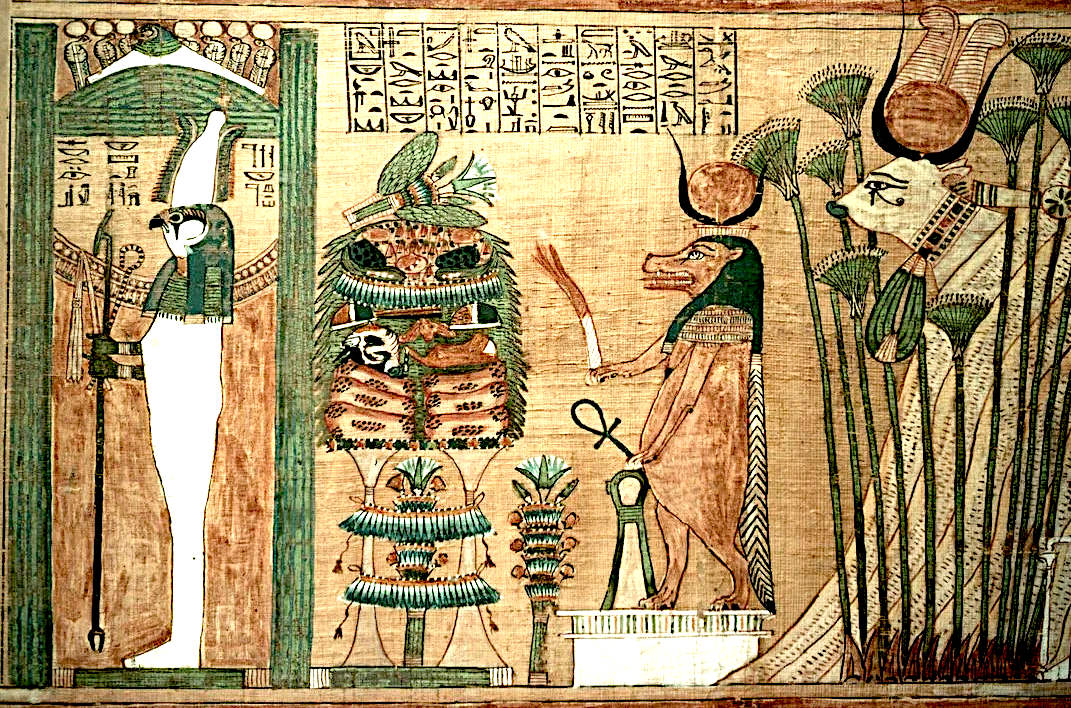
SMITHSONIAN MAGAZINE 8 SEPTEMBER 2014 - EGYPT'S MAMMAL EXTINCTIONS TRACKED THROUGH 6,000 YEARS OF ART
Tomb goods and historical texts show how a drying climate and an expanding human population took their toll on the region’s wildlife.
Ancient Egypt’s highly decorated tombs and funerary objects -
meant to ensure a safe trip into the afterlife - also hold a rich record of the region’s wildlife. Now scientists have used that art, along with other paleontological, archaeological and historical evidence, to map out the rise and fall of Egypt’s large mammals and match those patterns to changes in climate and human interactions.
The results, published today in the Proceedings of the National Academy of Sciences, offer an unprecedented glimpse into the ways population growth and climate change can influence an ecosystem over
millennia - perhaps giving scientists crucial insight into the long-term impacts of modern human activities.
Justin Yeakel at the University of California, Santa Cruz, and his colleagues began with a book, The Mammals of
Ancient
Egypt, which documented the distribution of animal communities from their artistic representations and historical records. According to the book, for example, two species of rhinoceroses had once been present but had disappeared by the Late Predynastic or Early Dynastic periods, approximately 5,000 years ago. The researchers then combined this information with other animal records, such as ancient writings. Lions, for instance, were present during the time of Herodotus, around 2,400 years ago, but had become rare a little over a century later, according to Aristotle.
To analyze the patterns of extinctions, the scientists created a computer model that let them relate the disappearances to predator-prey dynamics and changes in local climate. Previous geological and paleontological research shows that the Egypt of 6,000 years ago was very different from the landscape today. That’s because Earth is tilted on its axis with respect to the sun, and the planet wobbles slowly as it orbits, creating slight variations in its tilt that can affect global climate.
Millennia ago, northern Africa was much wetter and cooler. Monsoons struck periodically, and the Sahara was covered with lakes and vegetation. This greener version of Egypt was home to a mix of wildlife more like the one now found in East Africa, with 37 species of large mammals including lions, wildebeest, warthogs and spotted hyenas.
The region began to dry out about 5,000 years ago, a time that coincides with the fall of the Uruk Kingdom in Mesopotamia (located in present-day Iraq) and the rise of the pharaohs in Egypt. The Egyptian people at this time switched from a mobile, pastoral life to one of agriculture and subsistence hunting. The new research shows that several species of antelope, along with giraffes and rhinoceroses, disappeared around the same
time - extinctions that could be due to overhunting of herbivores. Shortly afterward, the long-maned lion vanished.
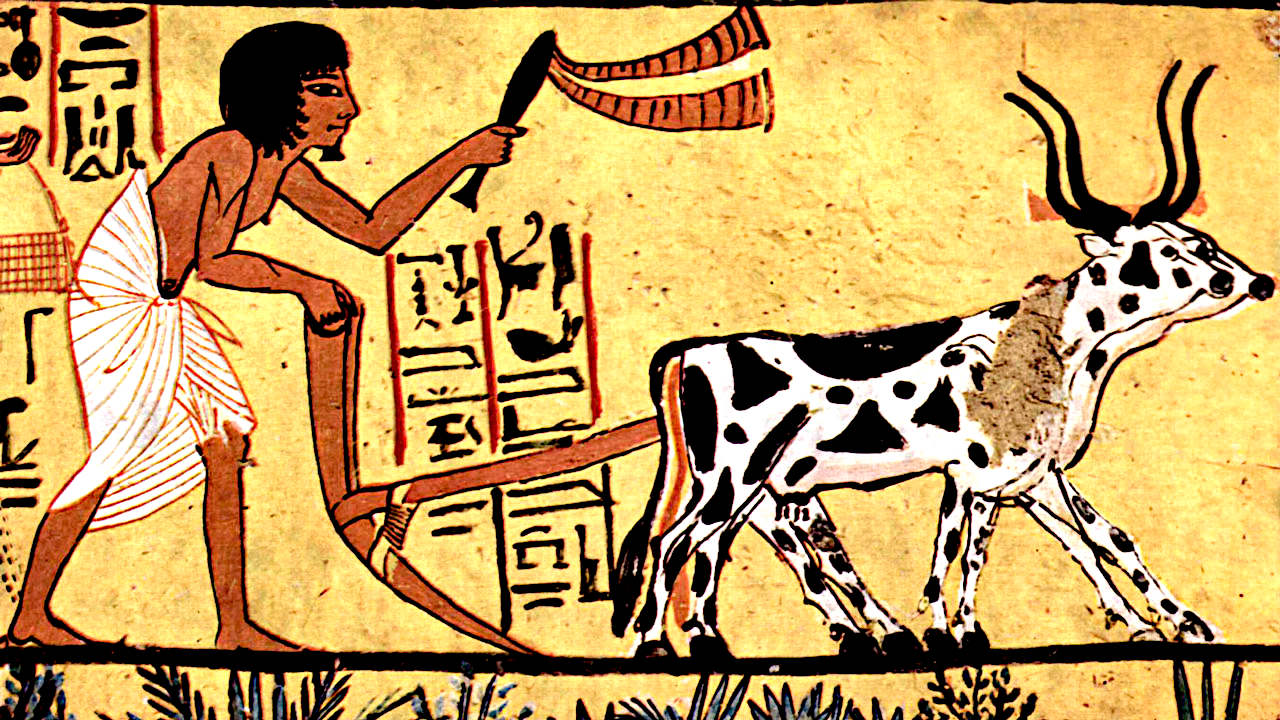
Egypt became even drier around 4,200 years ago, during a time known as the “First Intermediate Period” or the “dark period.” The region depended on yearly flooding of the Nile to inundate the land and leave behind nutrient-laden silt to feed agricultural fields. But during the dark period, this flooding became inconsistent, crop yields dropped and famine ensued. War and chaos reigned, and eventually the Old
Kingdom - and with it, the “Age of the
Pyramids” - ended. This is when the roan antelope and African wild dog disappeared from the records.
A third aridification event occurred about 3,000 years ago, again bringing drought and an end to the New Kingdom, a time that included
Tutankhamun and 12 kings named Ramses. Egypt’s short-maned lions, revered as sacred and even occasionally
mummified, vanished around this time.
Then about 150 years ago, as Egypt’s growing population became more industrialized, more species disappeared, including leopards and wild boar. Today, only 8 of the original 37 large-bodied mammals remain.
Egypt’s complex food web didn’t suffer too badly from the first few species disappearances, according to the study. When some herbivores were lost, most predators still had plenty of other prey animals to keep them fed. But as more species were removed, the ecosystem became increasingly unstable, and eventually most animals just couldn’t survive in a dry landscape populated with an ever-growing
human
population.
While the team notes that they can’t assign a specific cause to any particular extinction event, the model does show that the pattern of extinctions did not occur randomly, perhaps helping to refine theories about modern drops in biodiversity. “The trajectory of extinctions over 6,000 [years] of Egyptian history is a window into the influence that both climatic and anthropogenic impacts have on animal communities,” the researchers write.
By Sarah Zielinski
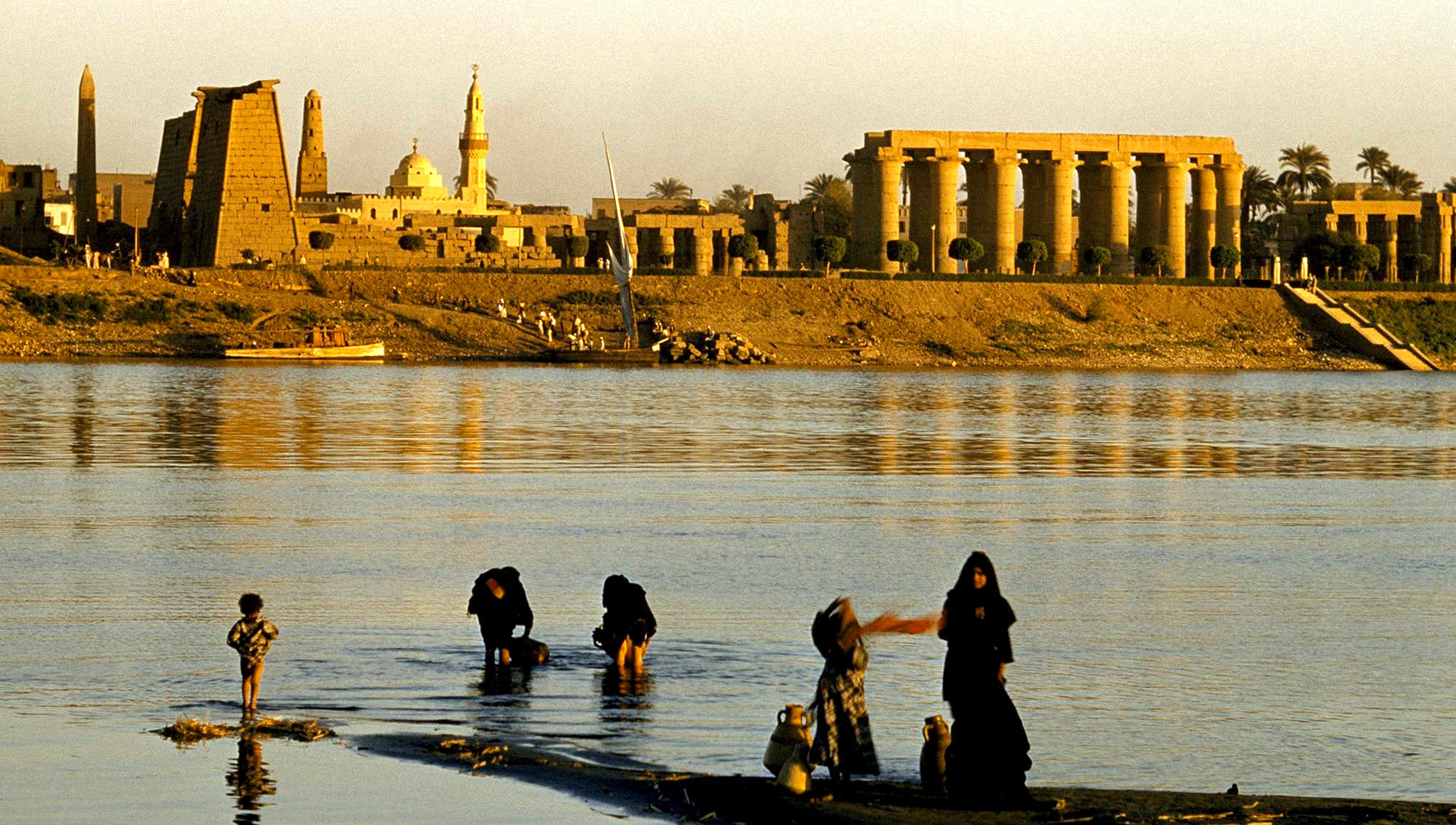
THE
NILE - Was then and is now the source of life for Egypt.
|






